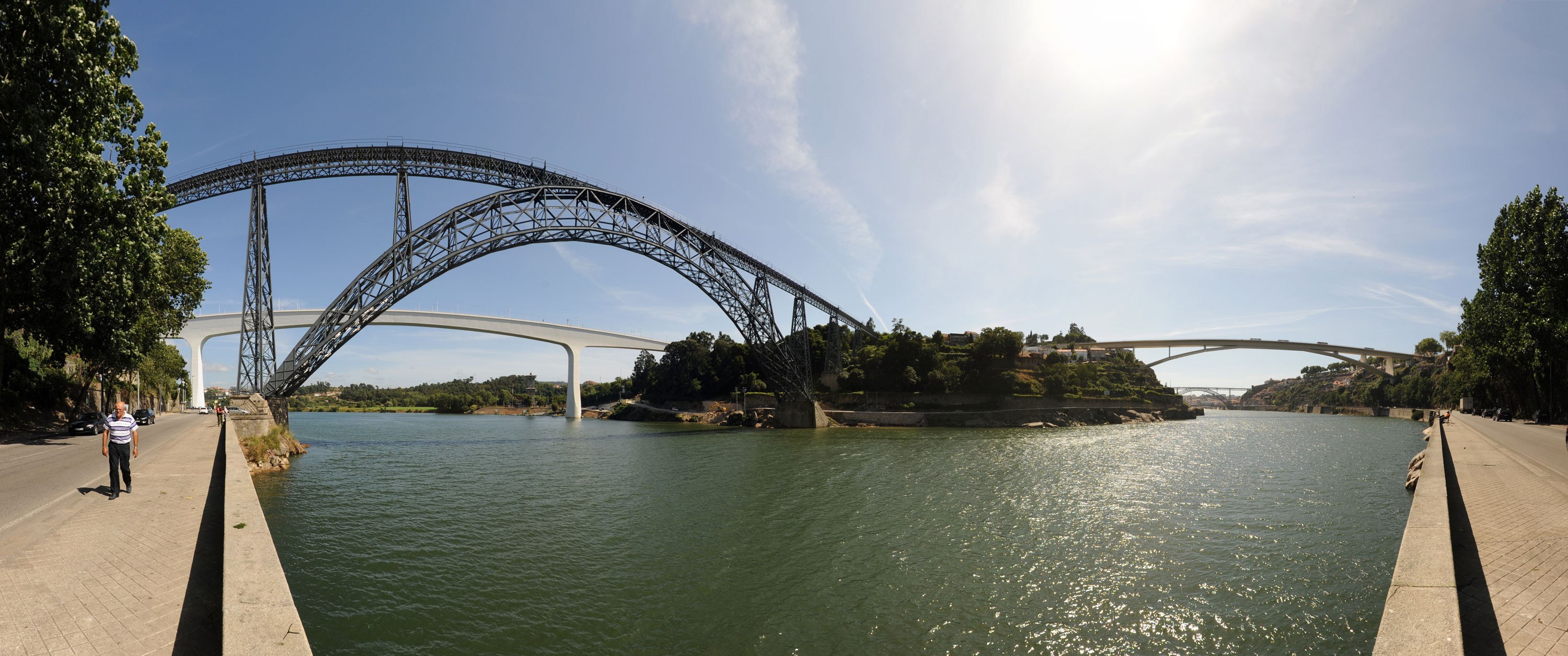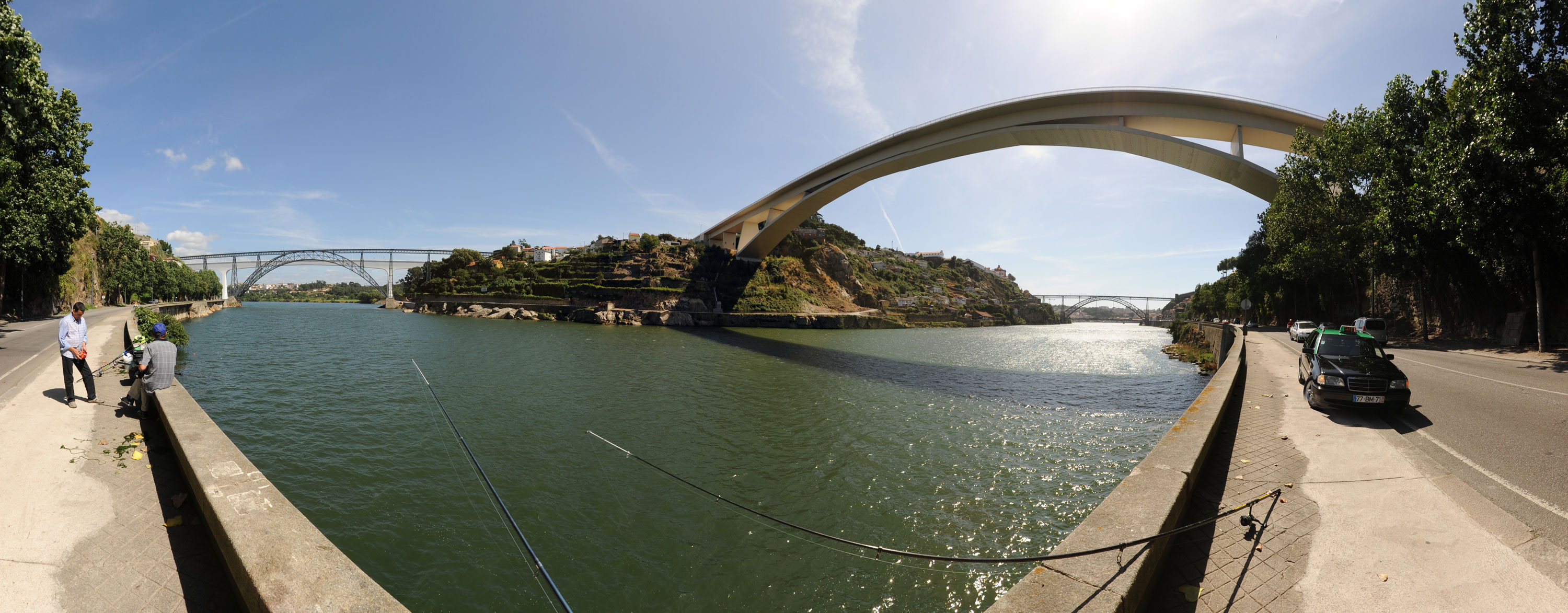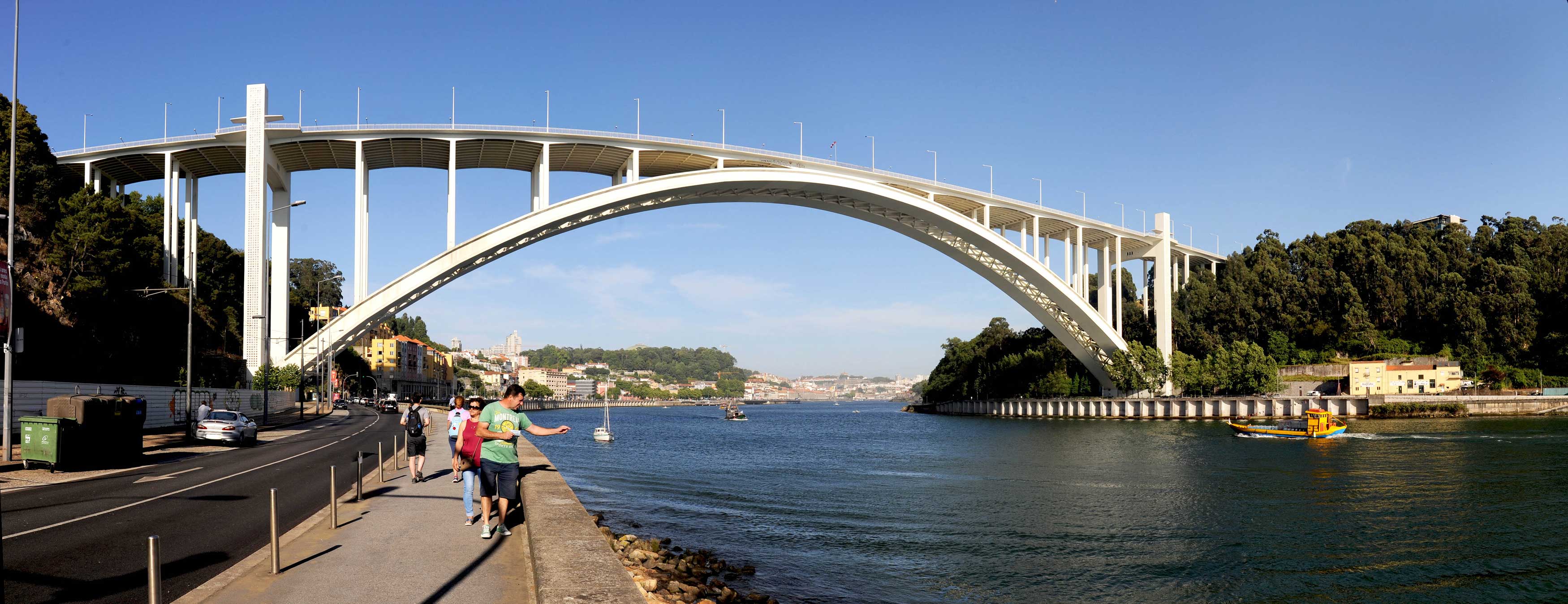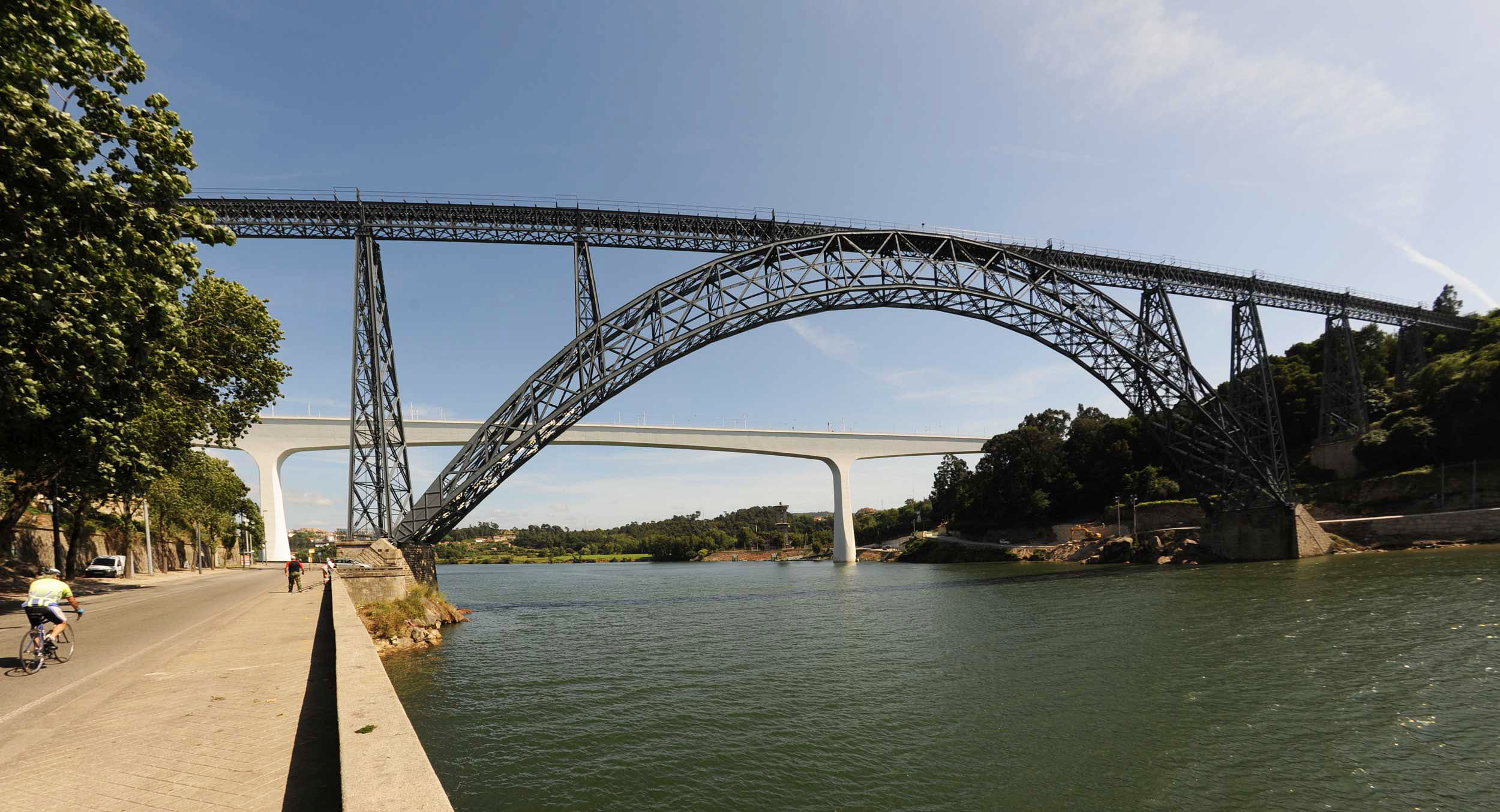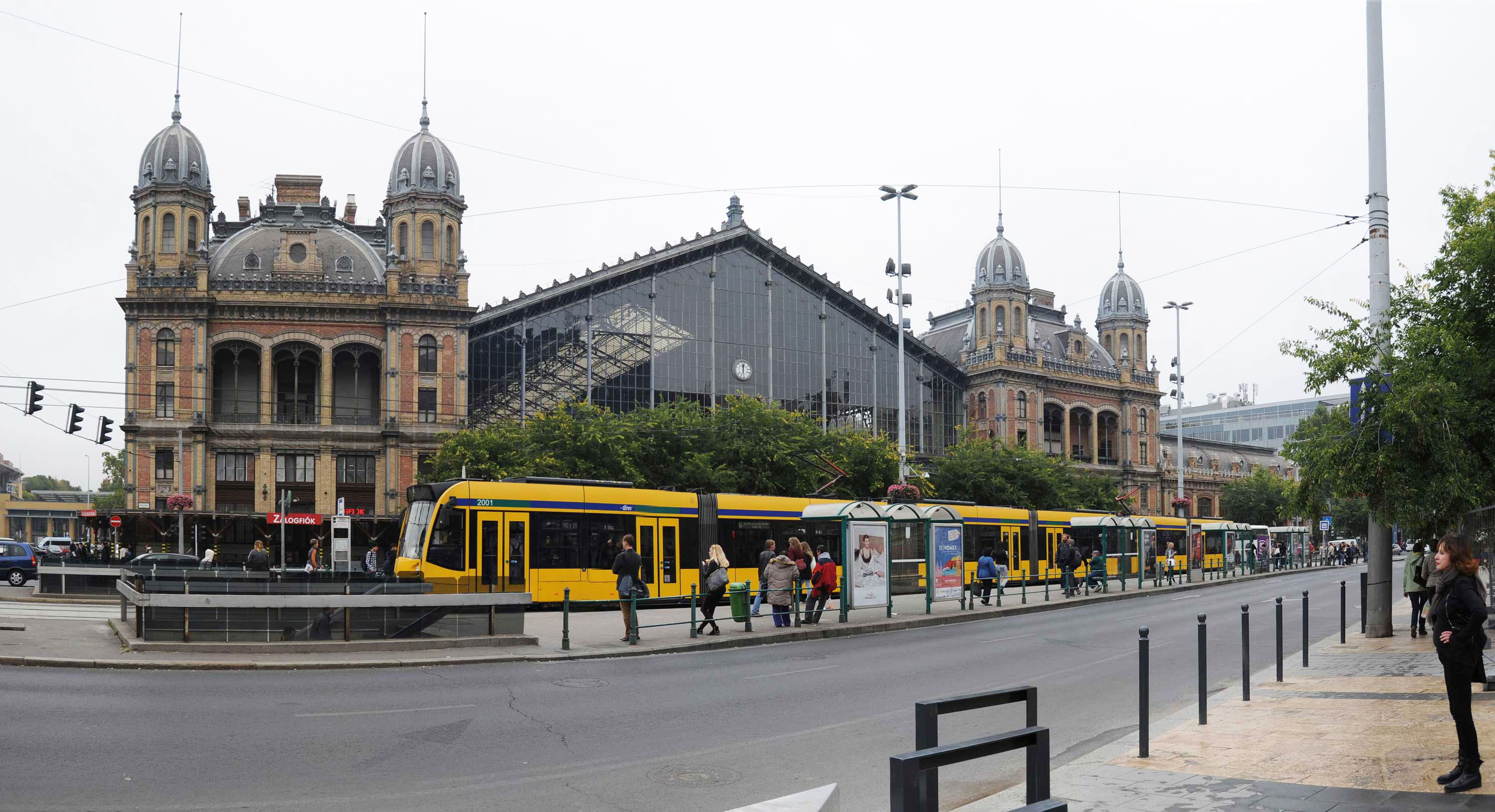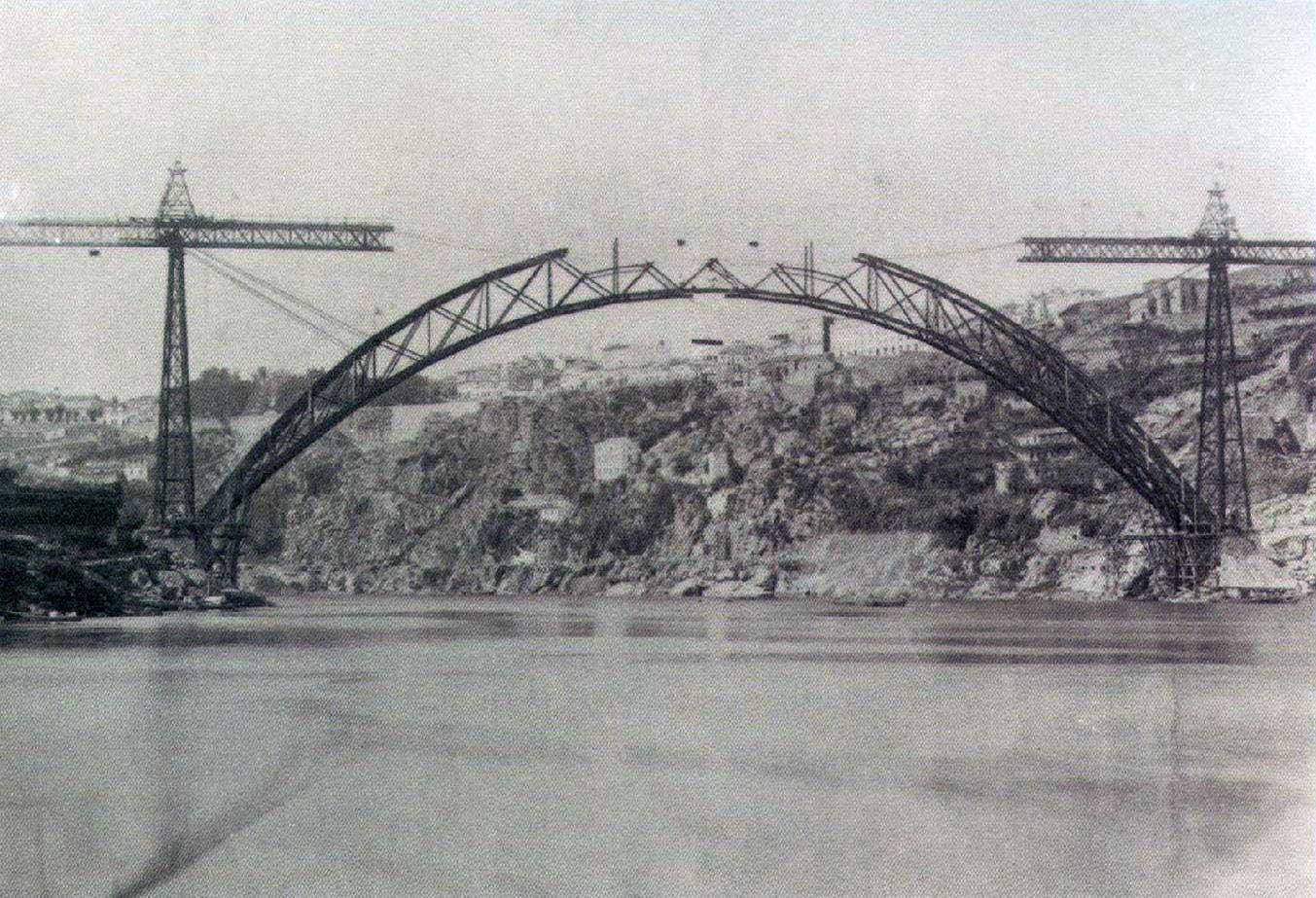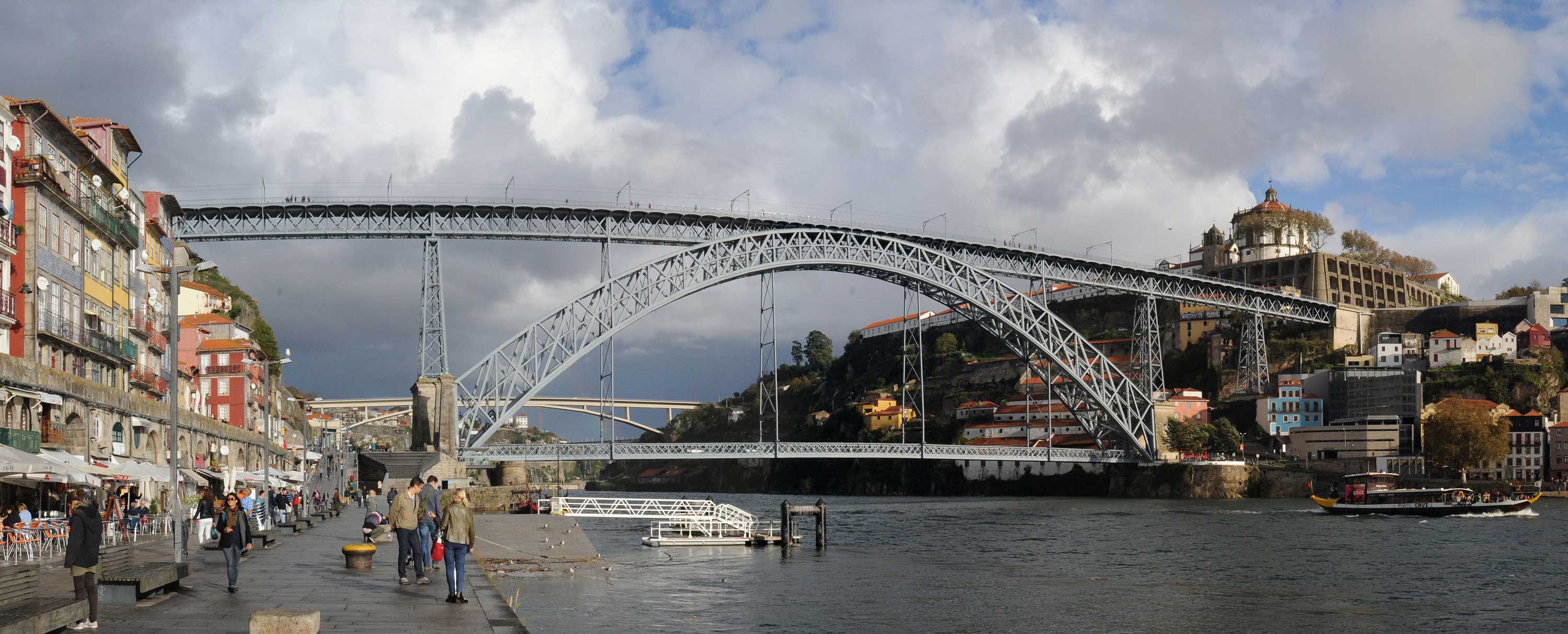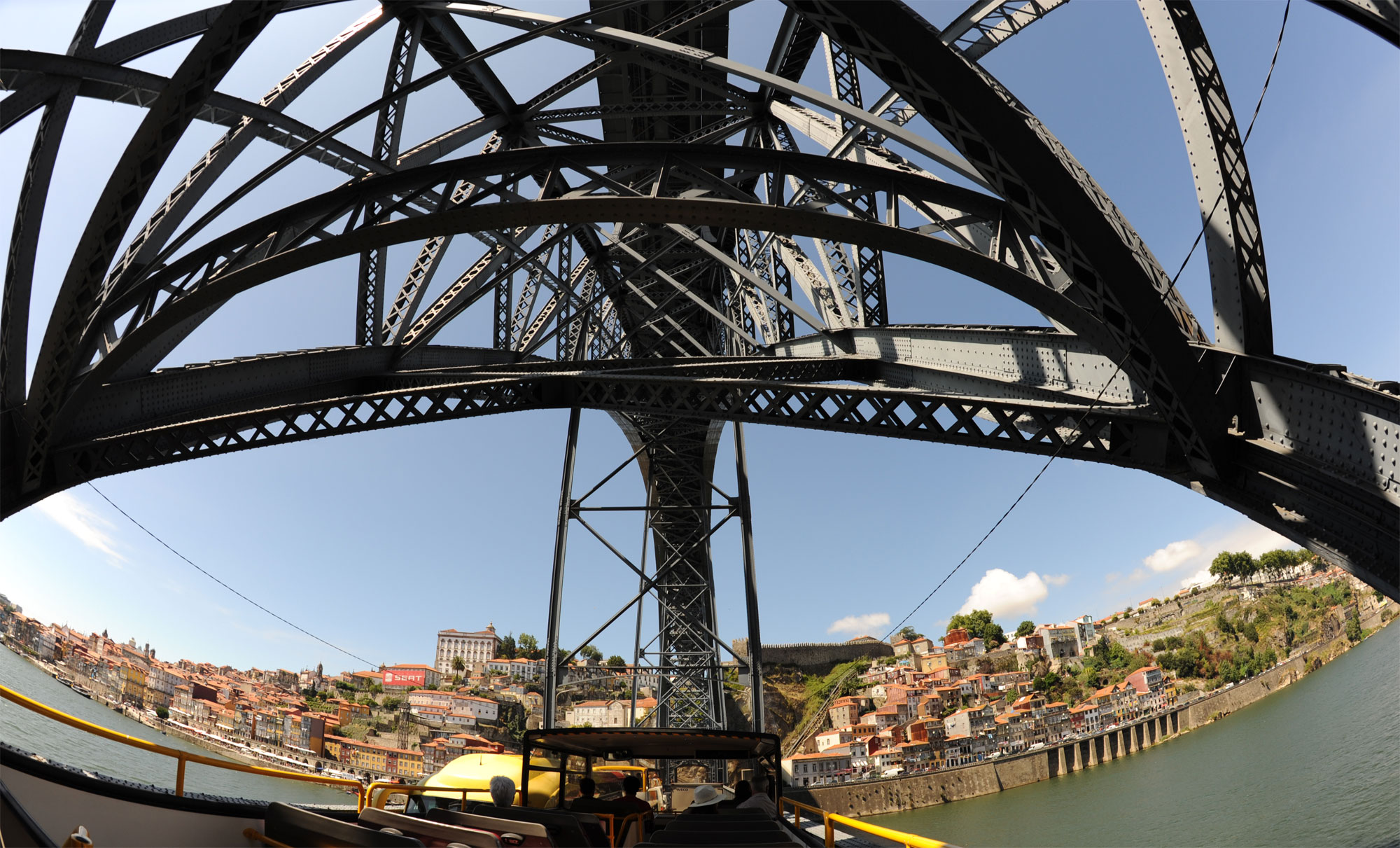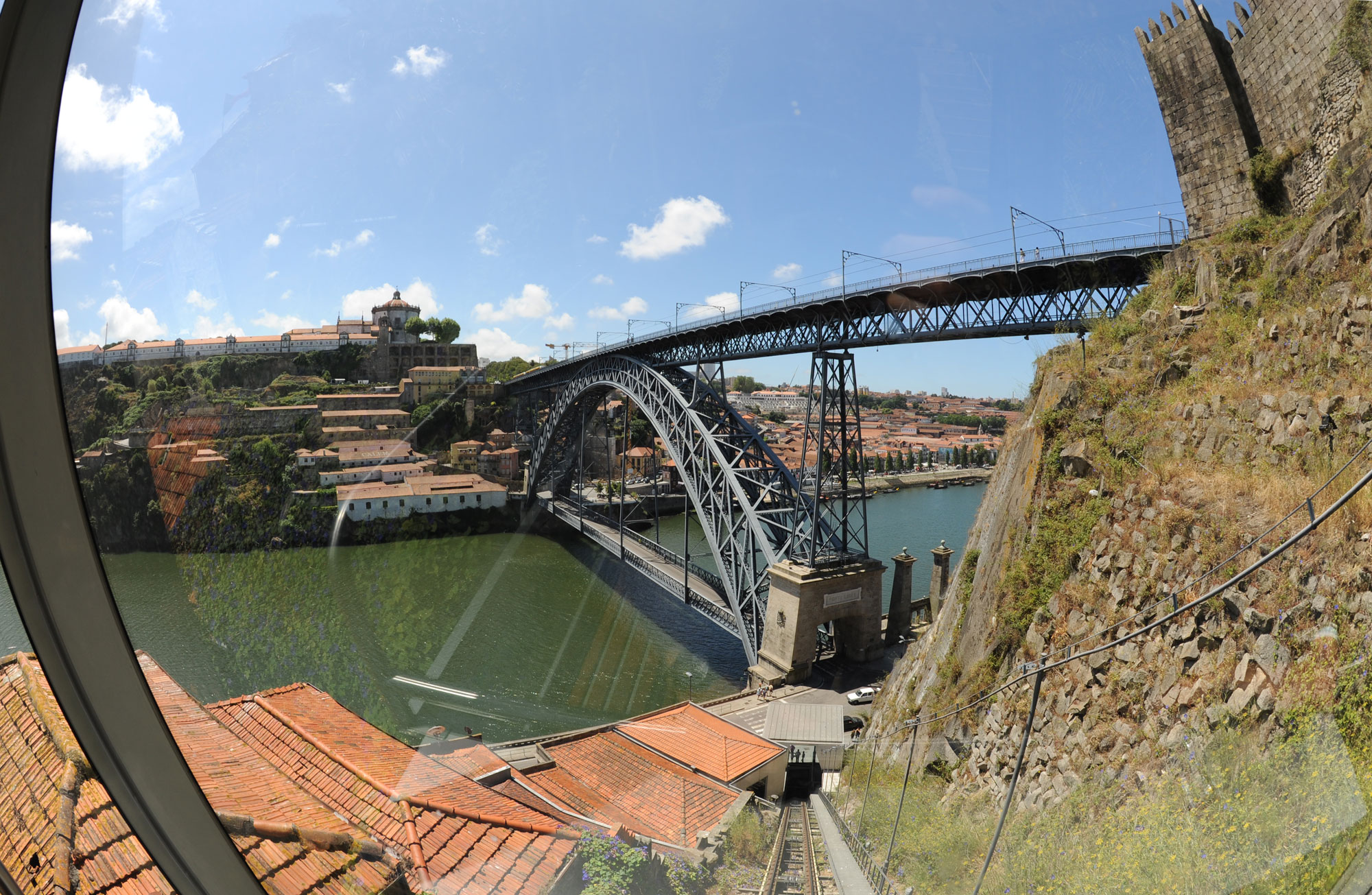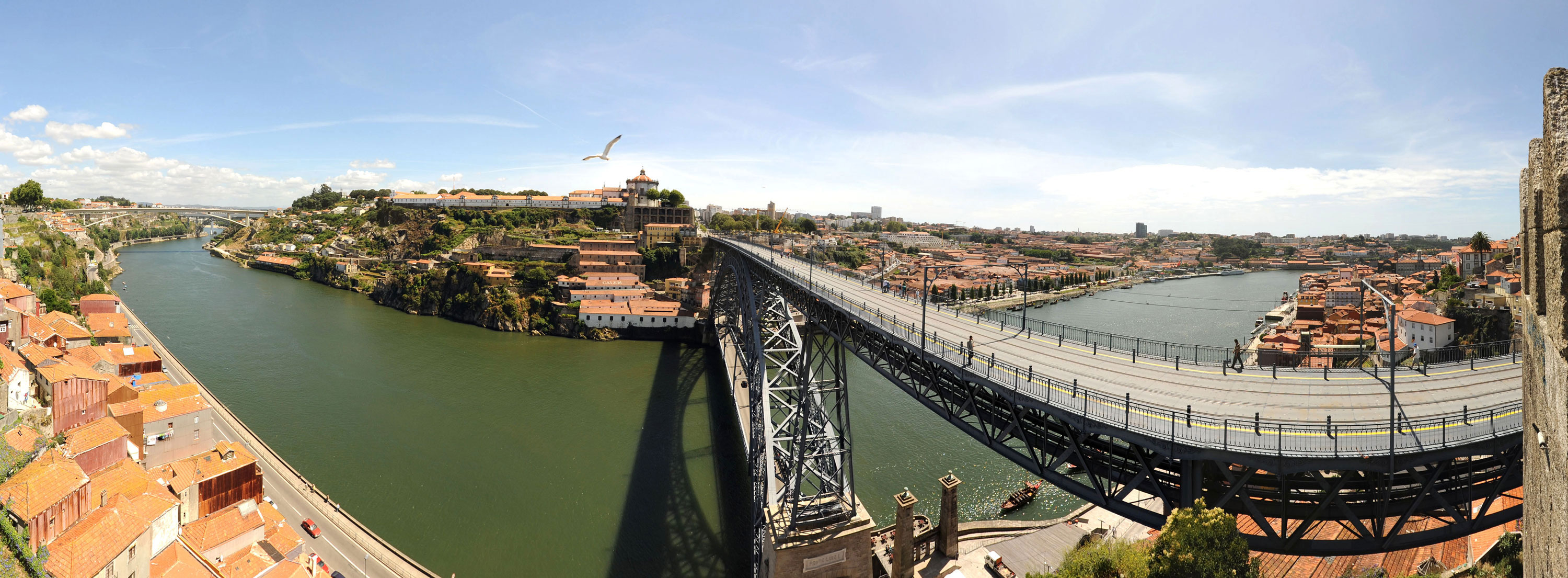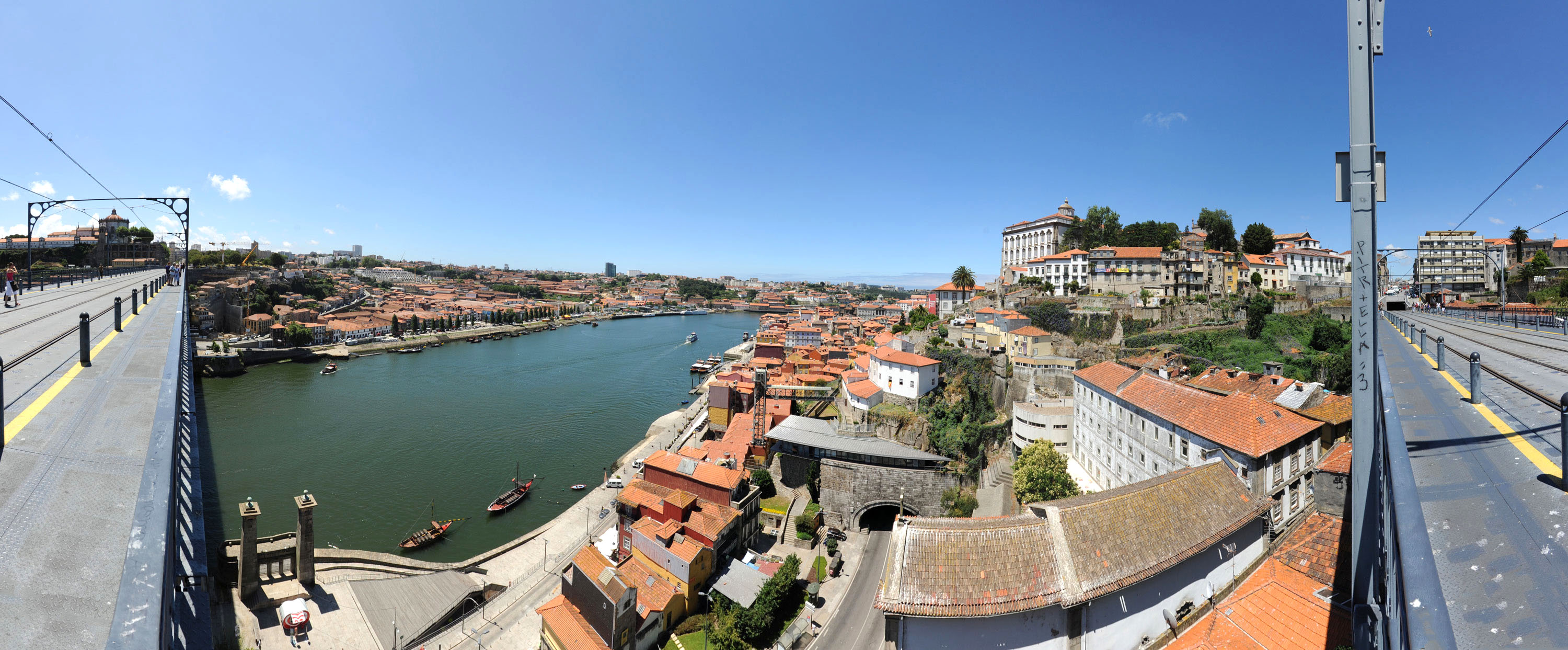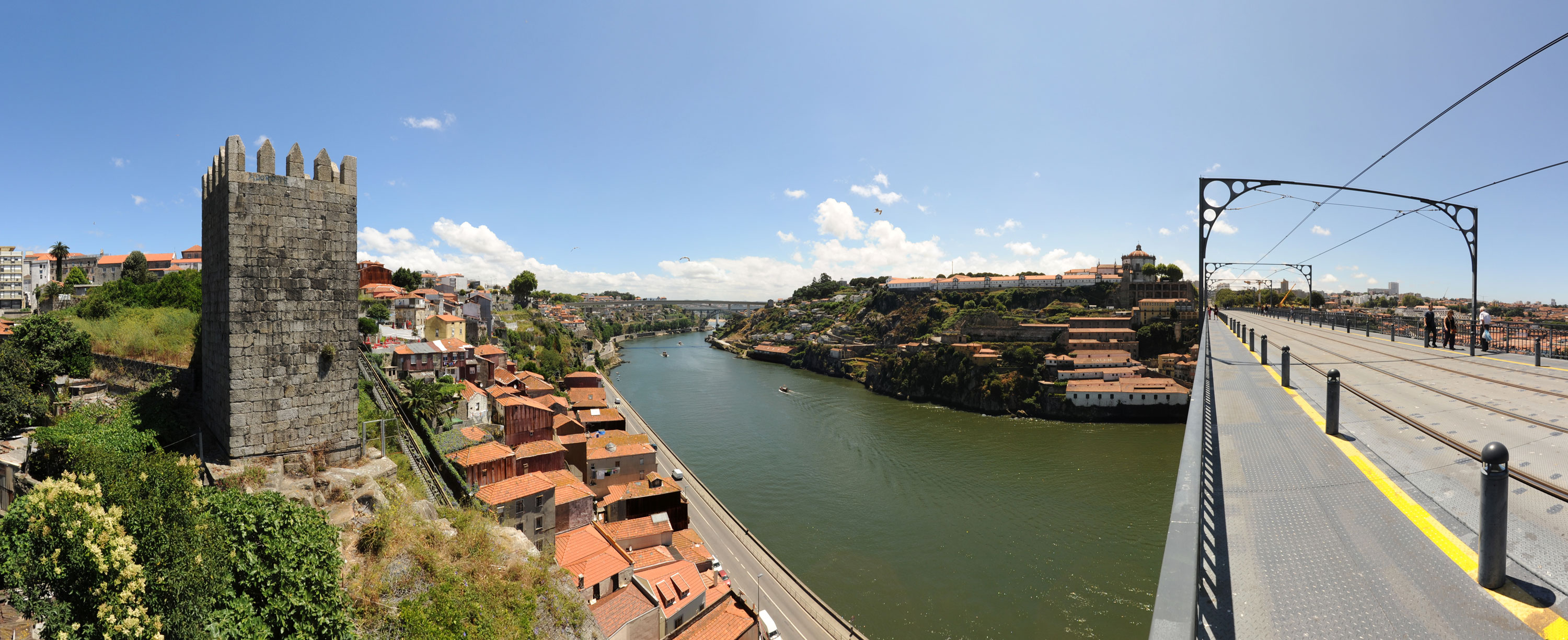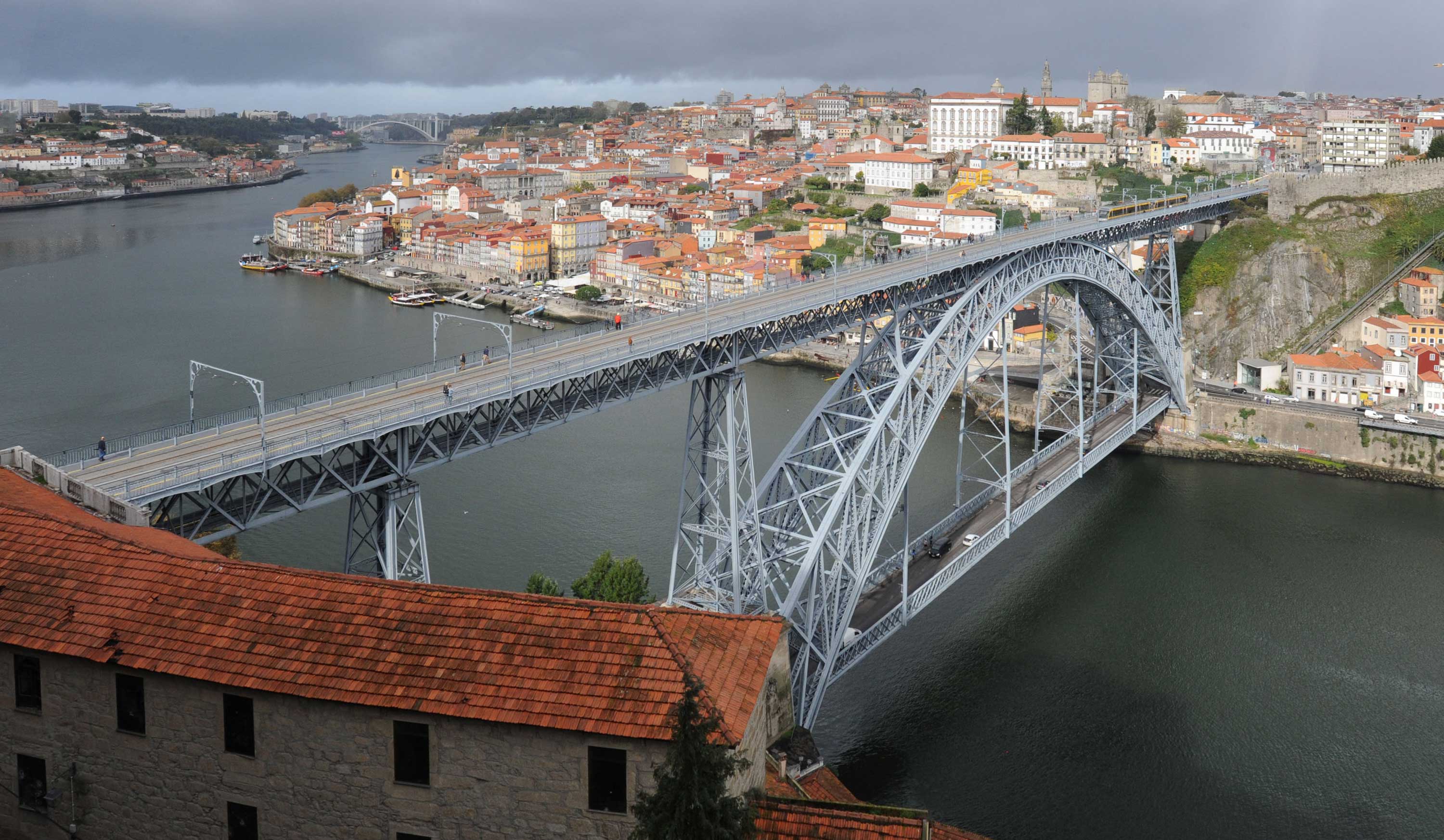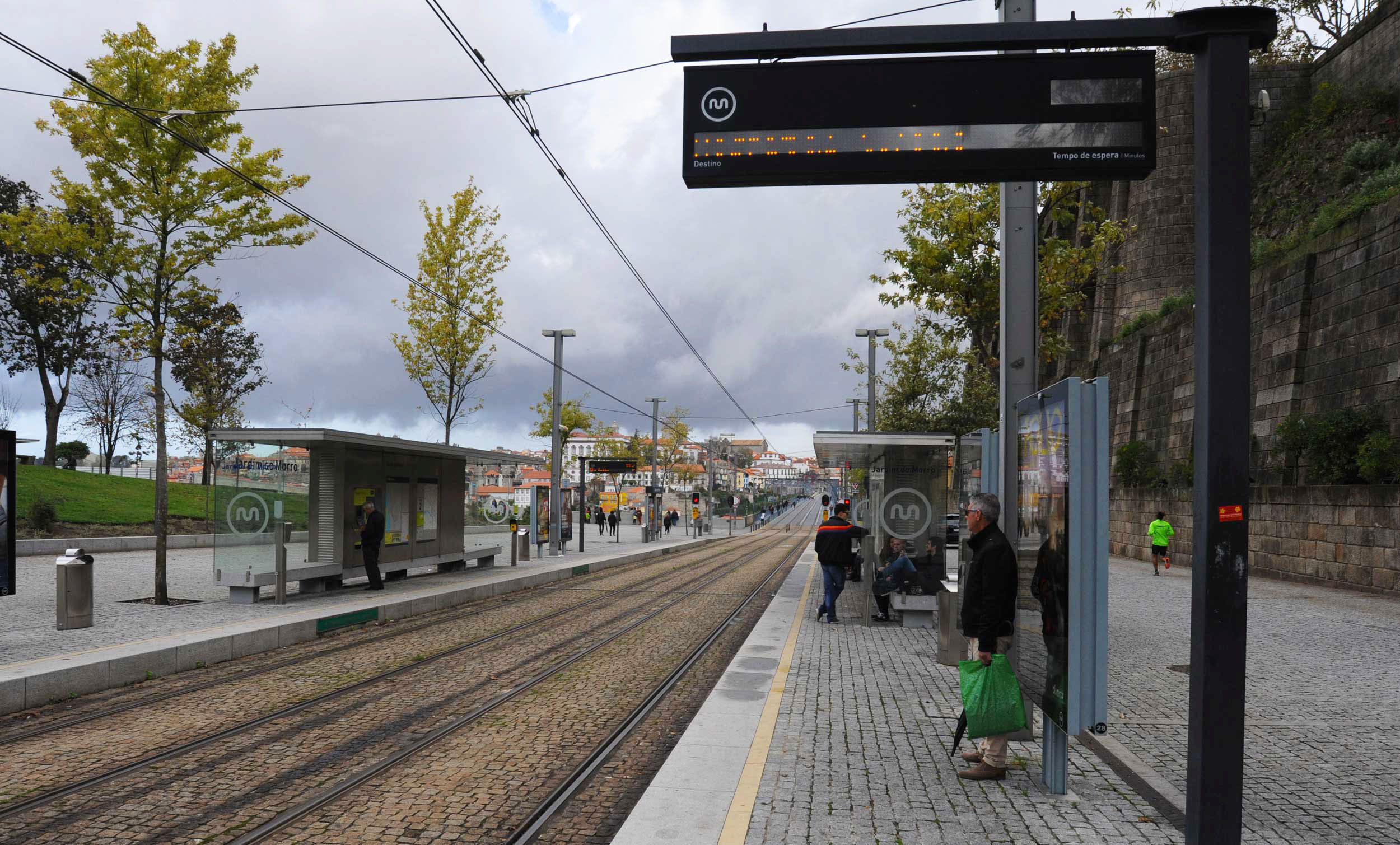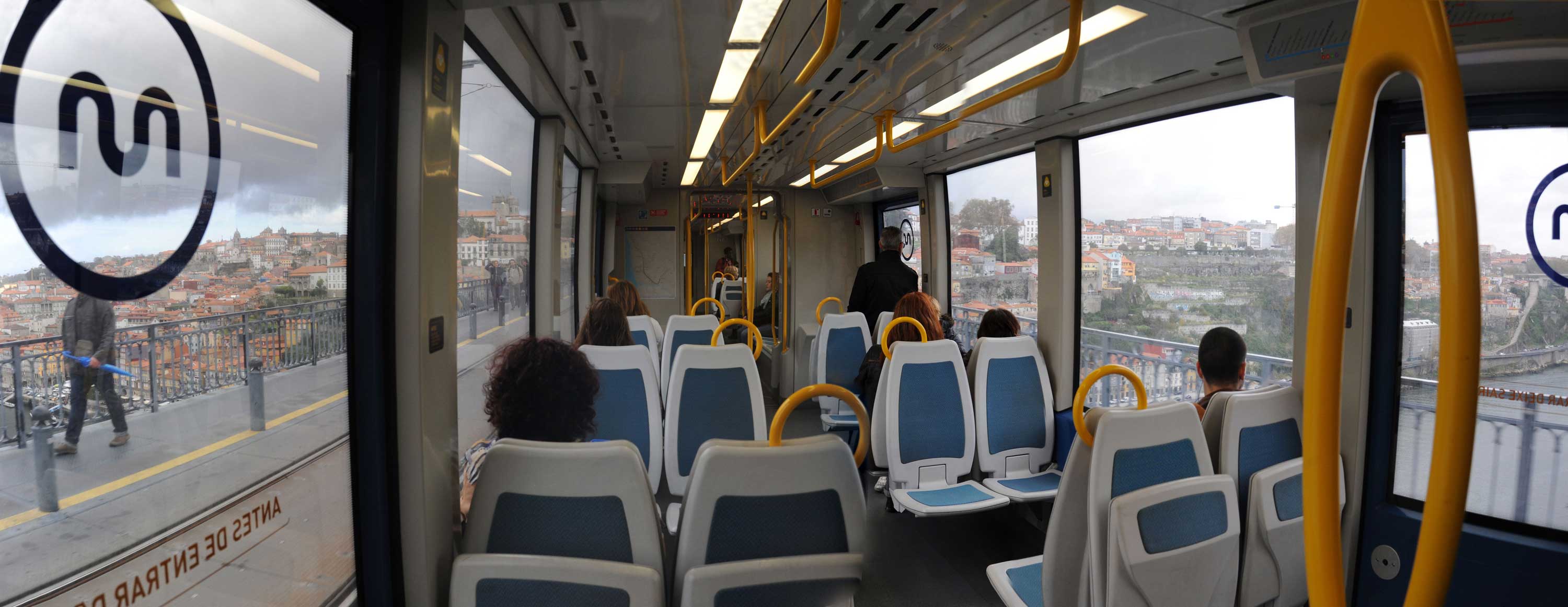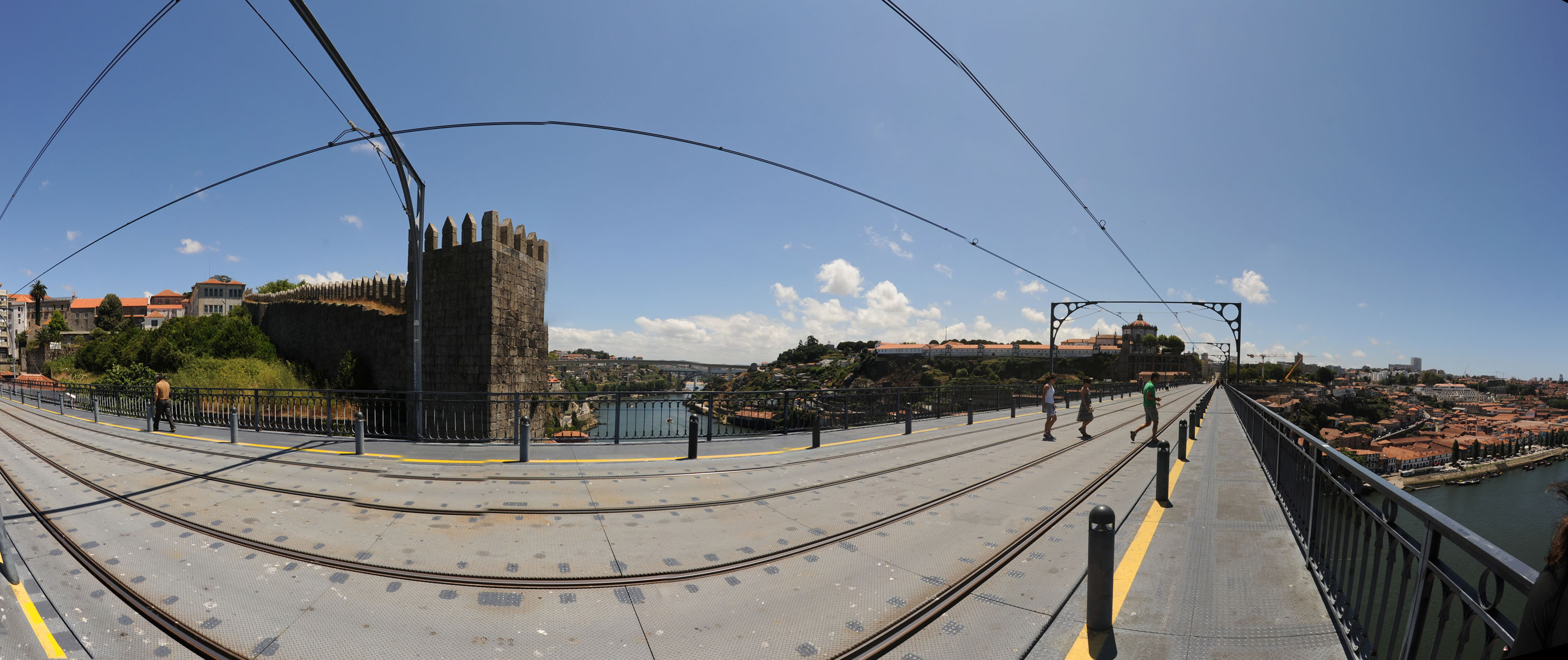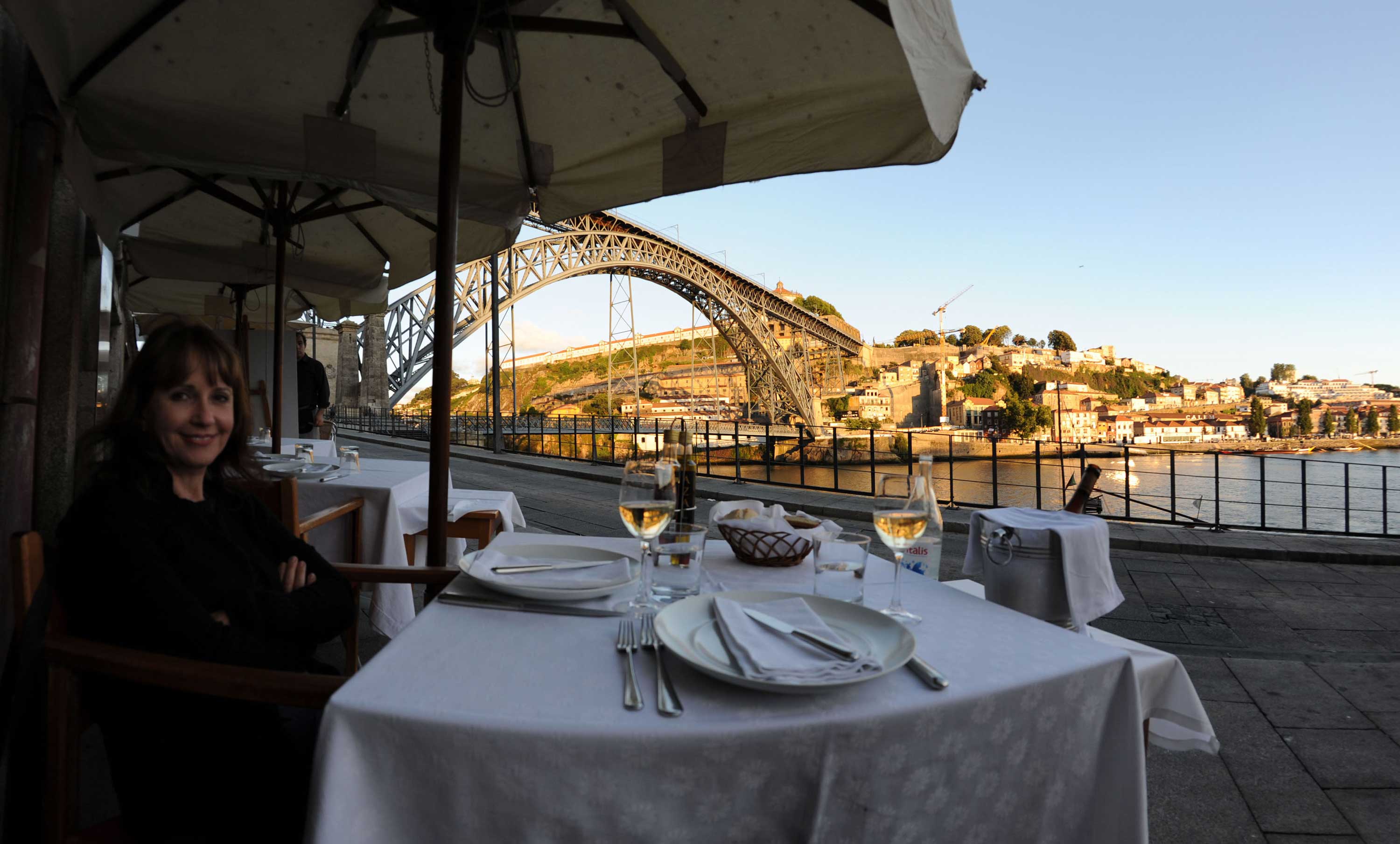Porto has six bridges crossing the Douro River. Two of these are particularly interesting in that they were the direct or indirect works of Gustave Eiffel, most famously known for the Eiffel Tower in Paris.
Here are four of the six. Begining upstream on the far left is the concrete Ponte do Sao Joao (double track railroad only, completed in 1991); the famous wrought iron Ponte Maria Pia (railroad only) completed 1877; to the right is the Ponte do Infante D. Henrique, completed in 2003 (famous because it is the longest concrete span bridge in the world - 360 meters); and further downstream the famous wrought iron Ponte Louis I, completed in 1887. Not seen are the Ponte do Freixo eight-lane highway bridge out of sight upstream to the left, completed in 1995; and the Ponte da Arrabida, a six-lane highway bridge completed in 1963 out of sight downstream, only two kilometers from the Atlantic Ocean.
Another look at these four bridges from further downstream, almost underneath the Ponte do Infante D. Henrique. Beautiful slender concrete arch.
This is the westernmost bridge, the Ponte da Arrabida. A six-lane concrete highway bridge completed in 1963. A beautiful work of concrete. A tour organization offers groups the opportunity to climb the arch from the northern base all the way up to the top. Very popular, only 12 Euros.
Now back to the Ponte Maria Pia. Its history is really interesting both technically and in a global sense. A competetion was held by the Royal Portuguese Railway Company in 1875 for the construction of a bridge to carry the Lisbon to Porto railway across the Douro River. This task was very challenging. The Douro River was very fast flowing, its depth could be as much as 20 meters in flood stage, and the river bed was a deep layer of gravel. These factors ruled out the use of piers in the river, thus forcing the use of a long single span of 160 meters. The winning design/bid was by the firm Eiffel & Cie of Paris, France. The design of the wrought iron bridge was by the team of Gustav Eiffel and his business partner Theophile Seyrig. The structure consists of a deck of 352 meters long supported by two piers on the north side of the river, and three piers on the south side.
The 1876 award of the contract to Eiffel for construction of this bridge, was the same year that Eiffel was awarded the contract for construction of the Budapest Nyugali railroad station, terminus of the Vienna to Budapest line. Looming in the near future was the 1881 design of the interior skeleton structure to support the Statue of Liberty. That project involved the complete erection of the Statue of Liberty in Paris to make sure everything fit, then disassembling the project and then rebuilding it on site in New York. By 1884, Eiffel had already participated in refining the design of the tower for the 1889 Exposition Universelle in Paris, later to be named The Eiffel Tower.
The Budapest Nyugali Station.
Base of the Eiffel Tower using angled concrete piers for the four legs that are similar to those at the ends of the Maria Pia Bridge.
Another innovation in the construction of the Maria Pia Bridge was the method of construction of the central arch. Since it was impossible to use any falsework to support the arch underneath, the arch was built out from the abutements on either side, the weight of the arch being supported by diagonal cables attached to the tops of the piers supporting the deck, as well as to the deck structure itself. Construction started on 5 January 1876 and finished 1 October 1877. Fast by any standard. The bridge was retired from service in 1999, and was declared a national monument.
This is the second famous bridge, the Ponte Louis I. The Government of Portugal held another competetion for the design and construction of this metal (wrought iron) bridge in this prominant downtown location. It was to replace a small suspension bridge in the same location. Teophile Seyrig, the former partner of Gustav Eiffel for the design and construction of the Maria Pia Bridge 9 years earlier, took sole responsibility for this bridge and was awarded the contract. Construction begain in 1881 and the bridge opened in 1886 (upper deck) and 1887 (lower deck). Total length is 385 meters, weight is 3045 tons, and the central arch spans 172 meters. This arch superseeded the Maria Pia Bridge arch as the longest in the world.
The Ponte Louis I is a two deck structure, originally with both decks carrying road traffic. Later, the upper deck was converted to light rail and pedestrian use only.
It is symmetrical and surprisingly delicate in appearance.
The two columns just to the right of the bridge entry are the vertical columns that supported the suspension cables of the original suspension bridge.
Even today it is daunting to take on a task of bridging a 385 meter distance. How it was done back in 1881 given the state of surveying, measurement of distances, and structural design for wrought iron is simply amazing.
Another look at the two columns that supported the original suspension bridge.
It really is a thing of beauty.
This is the Metro light rail stop at the south end of the bridge. Lets ride across...
Smooth ride with stupendous views.
The upper deck is a super venue for viewing the entire city.
The Ponte Louis I is always in the background no matter what you're doing.
An amazing work of Civil Engineering also performing as a work of art.
